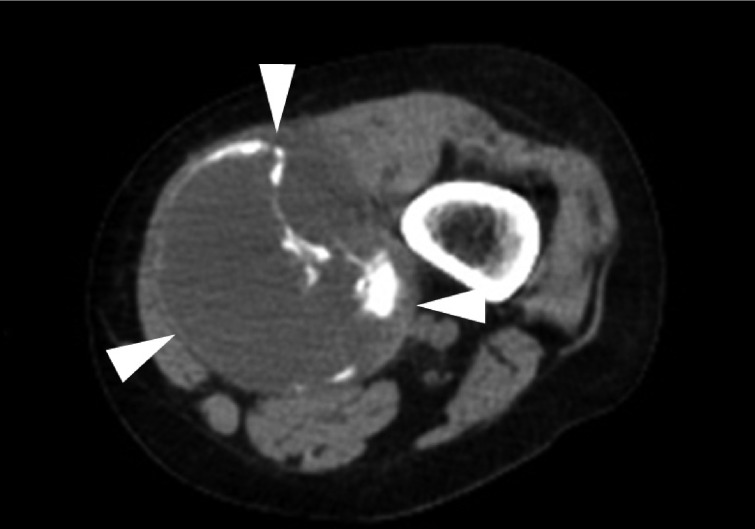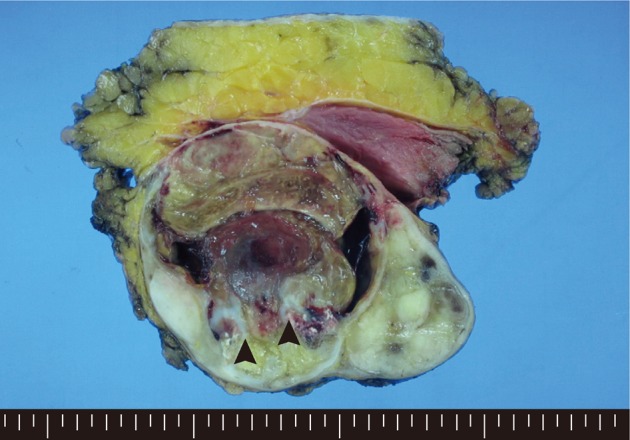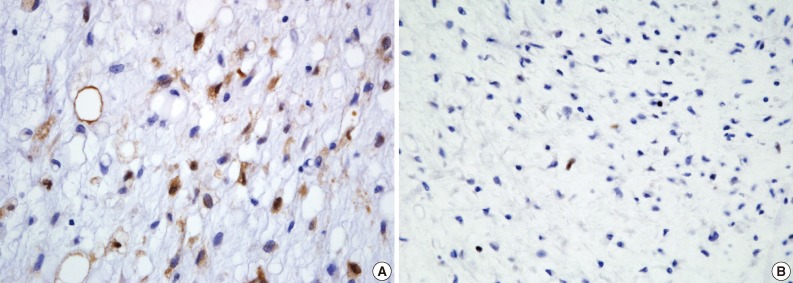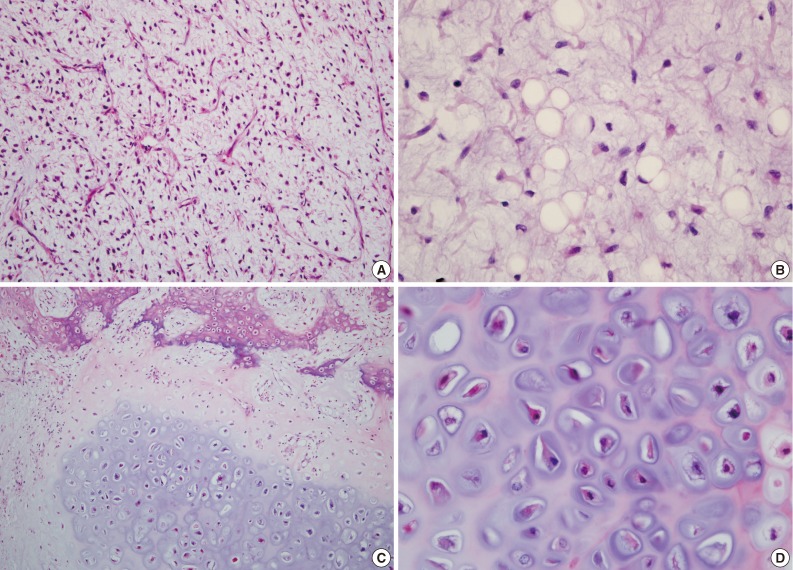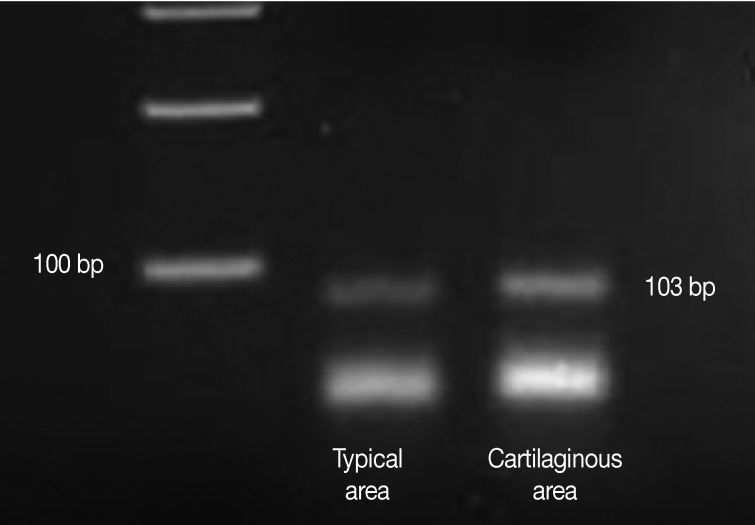Articles
- Page Path
- HOME > J Pathol Transl Med > Volume 47(3); 2013 > Article
-
Case Study
Myxoid Liposarcoma with Cartilaginous Differentiation: A Case Study with Cytogenetical Analysis - Hyunchul Kim, Won Hwangbo, Sangjeong Ahn, Suhjin Kim, Insun Kim, Chul Hwan Kim
-
Korean Journal of Pathology 2013;47(3):284-288.
DOI: https://doi.org/10.4132/KoreanJPathol.2013.47.3.284
Published online: June 25, 2013
Department of Pathology, Korea University Anam Hospital, Korea University College of Medicine, Seoul, Korea.
- Corresponding Author: Chul Hwan Kim, M.D. Department of Pathology, Korea University Anam Hospital, Korea University College of Medicine, 73 Inchon-ro, Seongbuk-gu, Seoul 136-705, Korea. Tel: +82-2-920-5991, Fax: +82-2-920-6576, chkap@korea.ac.kr
• Received: July 23, 2012 • Revised: August 31, 2012 • Accepted: September 4, 2012
© 2013 The Korean Society of Pathologists/The Korean Society for Cytopathology
This is an Open Access article distributed under the terms of the Creative Commons Attribution Non-Commercial License (http://creativecommons.org/licenses/by-nc/3.0/) which permits unrestricted non-commercial use, distribution, and reproduction in any medium, provided the original work is properly cited.
Figure & Data
References
Citations
Citations to this article as recorded by 

- Myxoid liposarcoma with nuclear pleomorphism: a clinicopathological and molecular study
Naoki Kojima, Takashi Kubo, Taisuke Mori, Kaishi Satomi, Yuko Matsushita, Shintaro Iwata, Yasushi Yatabe, Koichi Ichimura, Akira Kawai, Hitoshi Ichikawa, Akihiko Yoshida
Virchows Archiv.2024; 484(1): 71. CrossRef - The Conundrum of Dedifferentiation in a Liposarcoma at a Peculiar Location: A Case Report and Literature Review
Ana-Maria Ciongariu, Adrian-Vasile Dumitru, Cătălin Cîrstoiu, Bogdan Crețu, Maria Sajin, Dana-Antonia Țăpoi, Aminia-Diana Ciobănoiu, Adrian Bejenariu, Andrei Marin, Mariana Costache
Medicina.2023; 59(5): 967. CrossRef - Myxoid liposarcoma with cartilaginous differentiation showing DDIT3 rearrangement
Kayo Suzuki, Taketoshi Yasuda, Kenta Watanabe, Takeshi Hori, Masahiko Kanamori, Tomoatsu Kimura
Oncology Letters.2017;[Epub] CrossRef
 PubReader
PubReader ePub Link
ePub Link-
 Cite this Article
Cite this Article
- Cite this Article
-
- Close
- Download Citation
- Close
- Figure
Myxoid Liposarcoma with Cartilaginous Differentiation: A Case Study with Cytogenetical Analysis





Fig. 1 Computed tomography of the left distal thigh. A well-demarcated mass (arrowheads) within muscle with heterogeneous density and calcification.
Fig. 2 Gross picture of resected specimen. An 11 cm-sized, well-demarcated lobulated mass with hemorrhage and cystic change. Soft myxoid, gray firm fibrotic, and bluish resilient cartilaginous areas (arrowheads) are noted.
Fig. 3 (A) Fusiform cells and capillary networks are observed in the fibrotic area. (B) Lipoblasts are seen in the myxoid area. (C, D) Cartilage with moderate cellularity, cytological atypia, and enchondral ossification are found in the bluish resilient area.
Fig. 4 Immunohistochemical staining reveals that some of the fusiform cells and round lipoblasts are positive for S-100 protein (A). A few cells (less than 5%) are determined to be positive for p53 (B).
Fig. 5 From the left, the designated lanes are the size marker, typical myxoid liposarcoma area and cartilaginous area. Both the typical myxoid liposarcoma and cartilaginous areas demonstrate nested polymerase chain reaction product of 103 bp, which corresponds to a type II TLS-CHOP fusion transcript.
Fig. 1
Fig. 2
Fig. 3
Fig. 4
Fig. 5
Myxoid Liposarcoma with Cartilaginous Differentiation: A Case Study with Cytogenetical Analysis

 E-submission
E-submission
